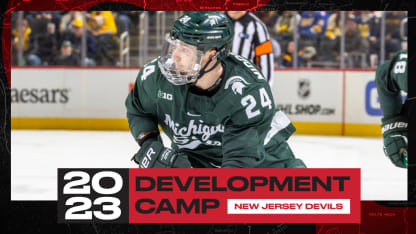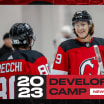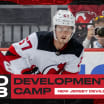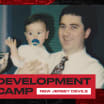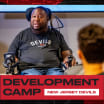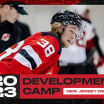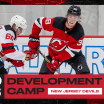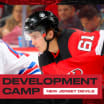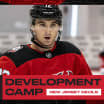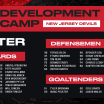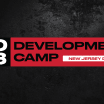At the Devils 2023 development camp, half of its attendees share a common experience: playing college hockey. Out of the 33 participants, half played college hockey last season. The University of Michigan, Michigan State, and Cornell University each had two participants while 13 total colleges were represented.
Development Camp Showcases College Hockey Path to Pros | FEATURE
With half of this year's development camp playing college hockey, the Devils prospects are showing the path to professional hockey through the collegiate ranks
